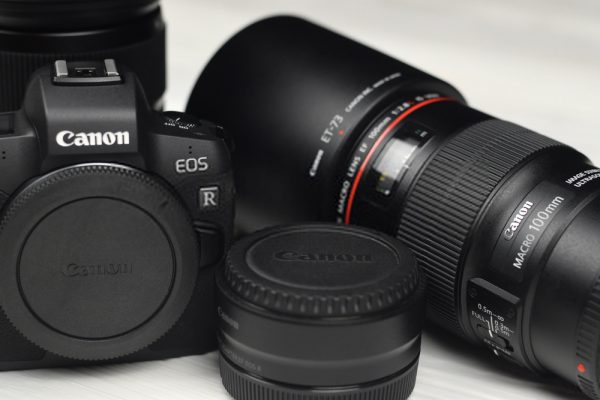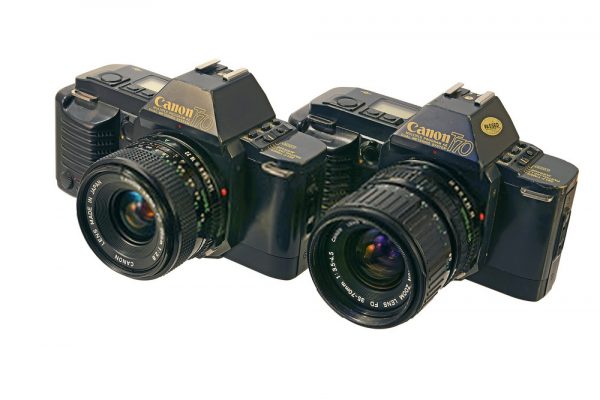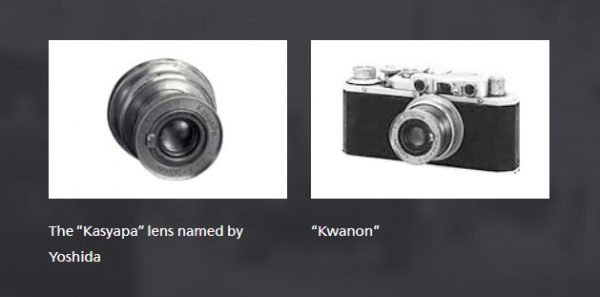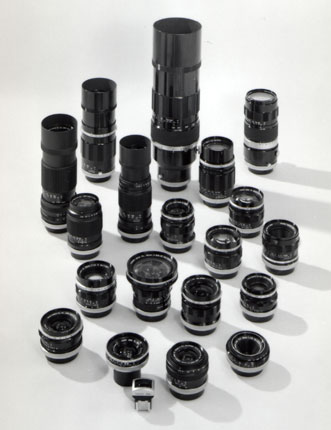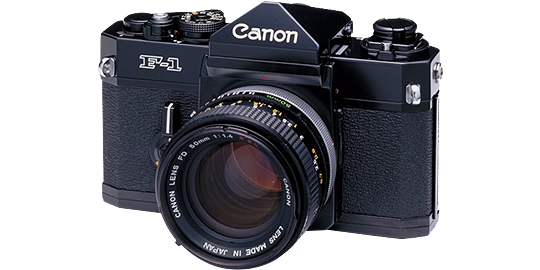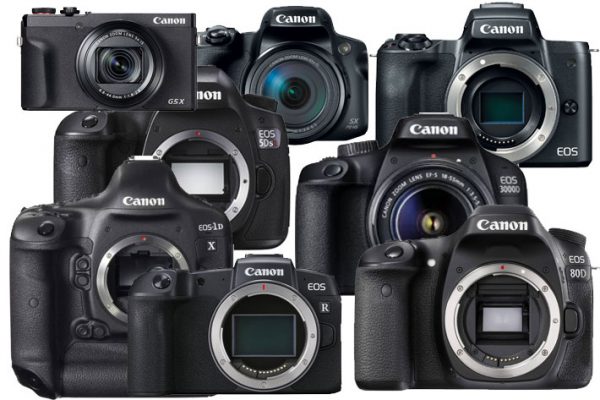An Overview Of Canon Cameras
If you’ve been around the block, you’d know that Canon cameras are some of the best cameras available. The brand name itself carries a lot of weight and is instantly recognizable. Even non-photographers might say that it’s one of the best camera brands without knowing anything about it. There are a couple of reasons for that. Firstly, Canon cameras have a lot of range, coming in various types and forms. You’ll find everything from classic DSLR cameras to mirrorless cameras and even point-and-shoot cameras in their lineup. Moreover, they make a wide variety of models in each category. You’ll find beginner-friendly cameras and professional-grade models in each division. However, while the company is most known for its cameras, that’s not all they sell. In fact, you can also find many other devices and equipment emblazoned with Canon’s logo. They sell products like calculators, broadcast equipment, printers, and even X-ray machines.
The History Of Canon Cameras
Established brands like Canon don’t sprout and grow overnight. Sure, there may be startups with nearly instantaneous success stories. However, it’s more common to find established companies that slowly grow before becoming what they are today. In Canon’s case, it took 80 years of hard work, toil, and innovation for it to build its current legacy. With that, let’s turn the dial backward and go back in time. Seeing their history will show us how Canon built its legacy and became the frontrunner we know today.
From Humble Beginnings
It was the year 1933 when the Precision Optical Instruments Laboratory was first formed in Tokyo. Founder Goro Yoshida, along with his partners Saburo Uchida and Takeo Maeda, formed the company to do one thing: investigate the inner workings of cameras. Before the company’s inception, Yoshida was already fascinated by cameras as a whole. He was initially a repairman for projectors and motion picture cameras. However, he had a particular interest in fiddling with machines in general. This led him to do the same with the luxury cameras of his day. Yoshida paid special attention to famous brands like Leica and Contax. Specifically, he tore down and studied the Leica Model II and Contax Model 1. He was surprised to find that, despite their high prices, there was nothing of real value inside. No frames of gold or lenses made of diamonds—only plastics, rubber, and common metals. With a piqued interest and light in his eyes, Yoshida ventured into the camera industry.
The First Canon Cameras
Shortly after Yoshida’s tinkering, he founded the company to research more about cameras. The fruits of their labor came around a year later in 1934 when they launched their prototype: the Kwanon. This was only the beginning of Canon’s success story. We begin to see more of the modern-day Canon with the company’s second iteration: the Hansa Canon. This prototype successor made history as the first high-end 35mm rangefinder camera made in Japan. It wasn’t just a prototype either: this time, the Hansa Canon was sold commercially through Omiya Shashin Yohin Co. Ltd. At the time, the Precision Optical Instruments Laboratory needed to rely on third-party suppliers for parts. It was still a small company and thus couldn’t produce everything in-house. Many parts including the lenses and rangefinders were brought in from outside. Interestingly, one of these suppliers was Nippon Kogaku Kogyo, a company that eventually rebranded as Nikon Corporation and is currently one of Canon’s biggest rivals.
A Change Of Plans
There was a time when Canon had to stop production due to WWII. However, the company picked its business back up soon after the war ended. By 1946, Canon had already released the SII: the first 35mm camera with an adjoined viewfinder and rangefinder. Then, three years later, Canon released a successor in the form of the IIB. Both the SII and the IIB significantly boosted Canon’s prestige. They were innovative and competent, so much so that Canon cameras had equal status with Leica. Unfortunately, Leica did outmatch Canon in 1954 when it released the M3. It was another 35mm rangefinder like previous models. However, this time, it was close to perfect with an excellent viewfinder and rangefinder. This prompted Canon and other Japanese camera companies to change gears. Instead of making rangefinders, Canon decided to concentrate on single-lens reflex cameras, also known as SLR cameras.
SLR Canon Cameras
Canon had a difficult task ahead because of the nature of SLR cameras at the time. While they had been around since the late 1800s, they weren’t widely used because they were unwieldy and complicated. Nonetheless, Canon had to compete in the camera industry. After some time, Canon released its first 35mm SLR camera in 1959. It was called the “Canonflex” and had a unique construction. This camera was soon succeeded by the Canonflex R2000. It’s safe to say that the Canonflex R2000 was popular back in the day. However, it wasn’t the only SLR camera in Japan at the time. Nikon and other Japanese manufacturers also took a shot at SLR cameras and achieved much success. It was at this point that the camera industry shifted and SLRs began to rise in popularity.
Continuous Improvement & The Road To Perfection
Since the Canonflex, Canon has produced several SLR models. In 1971, they debuted their first professional-grade SLR called the F1. Following its release, Canon’s brand name became well-known for sports photography with Olympics photographers often using Canon cameras to take action shots. Since then, Canon has created many innovative Canon cameras for professional photography. However, as time progressed, Canon eventually branched out in developing DSLRs. Of course, at the time, DSLRs were bulky and difficult to use. However, Canon was able to make small and light DSLRs with fully automatic modes for easy photography. By the early 2000s, Canon had an established presence and reputation in the camera industry. However, it didn’t grow complacent and continued to build on its success. The company eventually went on to produce many new models. Among these included Canon’s point-and-shoot cameras, DSLR cameras with full HD video, and much more. It took decades of hard work to create the Canon cameras we see today. The company never stopped innovating and continues to do so even now. It never slowed down, always adopting and refining new technologies to improve on its camera technology.
Canon Cameras In The Present Day
As you can see, Canon’s history of hard work and innovation paved the road for its current success. However, history can only go so far because you have to maintain both quality and a good reputation. Let’s take a look at the specifics of Canon cameras today and why they’re still so popular.
Huge Equipment Library
In this sense, Canon’s long history does help out a lot. That’s because they’ve been around for so long that they’ve built a large enough library of equipment—this includes lenses, mounts, external flashes, and more. This means you can buy Canon cameras today and still find compatible lenses and mounts dating back to the 80s. You’ll never run out of choices and have a wider library to choose from compared to newer competitors. In addition, most new Canon cameras are backward-compatible with older lenses. Many of your old Canon lenses won’t go to waste if you decide to upgrade later. This lens compatibility no doubt plays a big role in why Canon cameras are widely recommended. Fans of newer lenses with new technologies also benefit a lot from using Canon cameras. That’s because it still manufactures new lenses with modern builds using better techniques. Moreover, the quality is impeccable on the new lenses. Whether you like traditional old lenses or something new and improved, Canon will surely deliver.
DSLR Cameras: One For Everyone
Canon has had a long history of making high-quality DSLR cameras. However, it’s not just in quality that Canon stands out, but also its price. As you know, Canon cameras can come in many forms, with different models designed for entry-level consumers, professionals, and in between. Furthermore, they make some of the cheapest DSLRs if you’re on a very tight budget. This flexibility allows Canon cameras to reach more people. With a reputable brand, it’s easy for people to just choose the cheapest camera with the Canon logo. Also, as these affordable DSLRs perform decently, customers are usually satisfied. Additionally, the selection of slightly more advanced Canon cameras is even better. Canon currently offers three different choices and all of them provide good quality. They also offer well-balanced price-to-performance ratios without skipping out on important features. As an example, the Canon EOS Rebel SL3/250D might be a mid-range camera, but it’s fast, responsive, and can even shoot in 4K. In terms of professional-grade equipment, Canon distinguishes itself from its competition by providing only the best quality. The Canon EOS 90D is a good example of this, as it’s a well-rounded model with a high-resolution sensor, 4K video, 10fps burst shooting, fast autofocus, and adaptable design. Professionals aren’t limited to APS-C DSLRs, either. Canon also carries full-frame DSLRs with high enough performance for action and sports photography. The Canon EOS-1D X Mark III stands out in this regard, as it supports high-tech deep-learning autofocus systems, smart controllers, and uncropped 4K.
Mirrorless Cameras: Getting Good
As technology advanced, the industry shifted once again to preferring mirrorless cameras. Of course, DSLR cameras still have their place in the industry. However, modern-day mirrorless digital cameras are quickly closing the gap in terms of performance. With the industry shifting, Canon cameras also made their way into the mirrorless camera sphere. They even had the upper hand against Nikon for a time when they released their first model. However, the competition did catch up quickly, especially for the lower-end, entry-level models. Nonetheless, entry-level mirrorless Canon cameras still have their place. The Canon EOS M50 is a decent choice for its fully articulating screen with 4K video in a small body with an reasonable price tag. If you want a full-framed entry-level mirrorless camera, Canon also offers good choices such as the Canon EOS RP. This camera is small, uncomplicated, and very affordable. While it doesn’t have as many features as its alternatives, it’s a solid purchase for the price. Canon also makes a bold mark on the professional mirrorless market. Just recently in 2020, they released the Canon EOS R5 to replace the EOS R. It’s a high-performing professional full-frame mirrorless camera in every aspect. The camera borrows the best-in-class autofocus of the EOS-1D X Mark III but fine-tunes it further. Moreover, its stills and image quality are immaculate, as expected from Canon’s full-frame pro-level mirrorless camera. It’s nearly unmatched if not for the expensive asking price.
An Innovative Brand For The Future
Photography has existed well before Canon made a mark on the industry. However, as Canon cameras penetrated the market, photography itself shifted. The company created many iconic cameras back in the day, paving the way for technologies and competitors to adapt. Canon even helped carve out the future of photography with its first entry into the SLR business. Throughout the years, they slowly lowered prices and allowed more of the public to dip their toes into photography. Furthermore, the company is comfortable branching out into different, less established markets like the point-and-shoot and mirrorless industries. They also not only adapt but even try to perfect pre-existing technologies. It’s no surprise, then, that Canon’s cameras are the frontrunners of the industry. Even today, the company innovates and can create new models that outclass existing ones. Canon cameras may not be perfect, but they’re undoubtedly some of the best cameras for photography.
